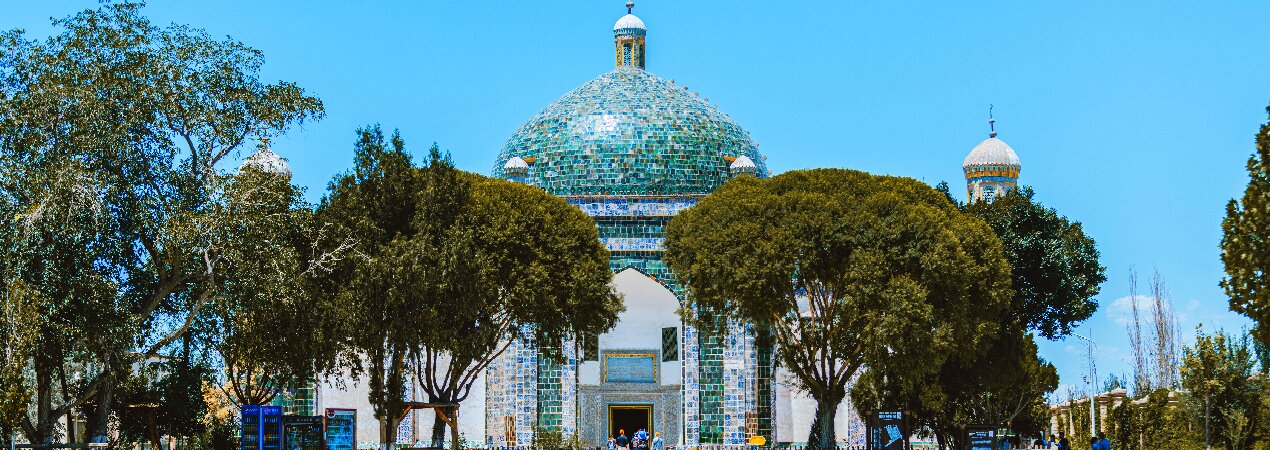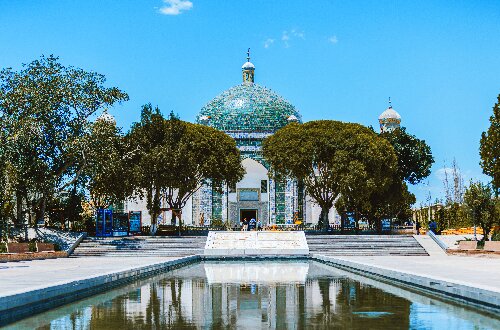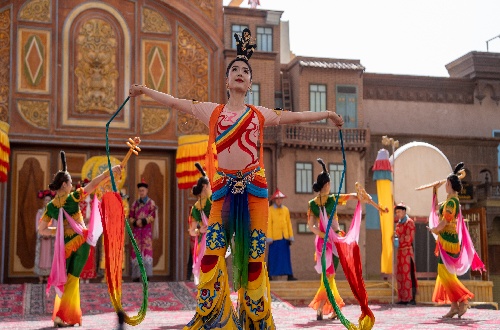Xiangfei Garden

The architectural style of Xiangfei Garden is mainly a combination of ethnic characteristics and modern elements, with a strong Islamic style. It is magnificent and majestic, yet fresh and elegant. Among them, the Xiangfei Tomb is the largest dome-style building in Xinjiang.
- Chinese name: 香妃园 Xiāngfēi Yuán
- Suggested time: Half a day
- Ticket: The ticket price is 30 yuan per person. The ticket for the folk performance is 60 yuan per person.
- Open hours: 10:30 - 19:30
- The best time to visit: From May to November
- Address: Aizirete Village, Haohan Township, 5 kilometers northeast of Kashgar City, Xinjiang Uygur Autonomous Region, China
- How to get there: Take Bus No. 20 or Bus No. 6, get off at Xiangfeiyuan Station, and then walk about 350 meters to reach the destination.
Highlights of Xiangfei Garden
High and Low Mosques
The High and Low Mosques are adjacent to the main entrance of the cemetery. The High Mosque is used for worship in summer, while the Low Mosque is used for worship in winter. Although the High Mosque is not large in area, it has a unique architectural style and gorgeous decorations. The wooden pillars in the mosque are finely carved, the ceiling has a variety of painted patterns, and the color combination is harmonious and unified. It can be regarded as the essence of the traditional architectural art of the local people.
Main Mausoleum
 Main Mausoleum
Main MausoleumThe main mausoleum is the core structure of the scenic area, located in the eastern part of the cemetery. Covering an area of over 2,000 square meters, it is one of the largest domed buildings in Xinjiang. The main tomb features a square base with a circular dome, and its four corners are equipped with cylindrical towers (approximately 3.5 meters in diameter) half-embedded in the walls. Spiral staircases inside the towers lead to the second floor and the roof.
The walls surrounding the mausoleum are faced with green glazed bricks, whose surfaces are decorated with colorful patterns. On the platform inside the mausoleum, tomb mounds of varying heights and sizes are arranged: the taller ones are male graves, while the smaller ones are female graves. Legend has it that the mausoleum houses the remains of 72 members from five generations of the Apakh Hoja family, but there are actually only 58 tomb mounds. Today, it has become an important holy site for pilgrimages and memorials to the descendants of saints south of the Tianshan Mountains and even in Central Asia.
Jiaman Mosque
Jiaman Mosque is located at the western end of the mausoleum. It features an open corridor-style outer hall with 15 bays on its front facade. The corridor eaves are supported by more than 60 wooden columns, which share a uniform column type but exhibit entirely different carving techniques and styles, reflecting the craftsmanship of different artisans. The ceiling is the focal point of decoration, with its caisson (coffered ceiling) showcasing strong color contrasts. Decorative patterns include square continuous motifs and two-directional continuous motifs, complemented by gypsum carvings and wooden carvings.
Educational Value
The dome structure of the main mausoleum is the largest domed building in Xinjiang. Its mechanical design (such as arch load-bearing and spherical stress distribution) demonstrates the application of geometric principles in ancient Western Region architecture and serves as a typical case for studying the structural mechanics of Islamic architecture.
Activities to do at Xiangfei Garden
 Xiangfei Performances
Xiangfei PerformancesWatch Performances: The scenic spot will regularly launch a series of large-scale live performances, such as the Xiangfei welcoming ceremony and the large-scale song and dance drama "Happy Xiangfei", so that you can more intuitively experience the story of Xiangfei and the culture of local ethnic minorities.
Handicraft Experience: In the handicraft workshop of the scenic spot, try to carve small wooden components with traditional tools, or copy the geometric patterns in the caisson pattern, and experience the techniques of traditional Uyghur crafts.
Drop us a line and we'll connect you with the top China expert in no time!